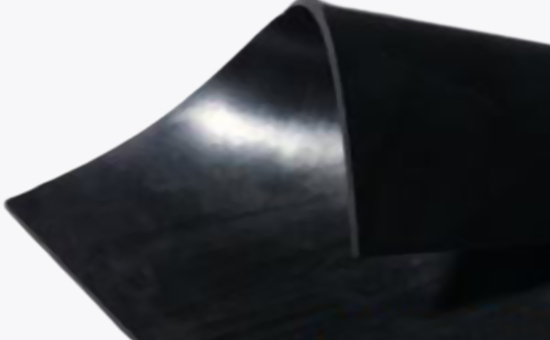
In the production of conductive rubber sheet with nitrile rubber and acetylene combined with a certain proportion of tread reclaimed rubber can significantly reduce the cost of raw materials, is a common processing method for conductive rubber sheet manufacturers; use tread reclaimed rubber and nitrile rubber to produce conductive In the rubber sheet, in addition to the reasonable adjustment of the rubber product formula, the rubber product manufacturer must strictly control the production process of the conductive rubber sheet to ensure the smooth production of the conductive rubber sheet and the quality of the finished product meets the rubber standard.
The process of producing conductive rubber sheets from nitrile rubber/tread reclaimed rubber mainly includes mastication, mixing, hot-smelting, filtration, vulcanization, etc. Among them, mixing, hot-smelting and vulcanization are the most important processes that directly affect the performance of conductive rubber sheets. .
1, mixing
After the nitrile rubber and the tread reclaimed rubber are fully masticated according to the degree of plastication, the compounding agent can be added to the kneading process. Nitrile rubber, tread reclaimed rubber and rubber used in mixing should pay special attention to the mixing temperature: in general, if the mixing temperature is too high in the early stage of mixing, the conductive particles are not fully mixed with other non-conductive particles. It is tightly combined with the rubber, so as to affect the conductive effect of the conductive rubber sheet; therefore, the mixed rubber used in the conductive rubber sheet needs to be kneaded at a lower temperature to ensure uniformity of the conductive particles, the non-conductive particles and the rubber compound. The mixing, thereby improving the conductivity stability of the nitrile rubber/tread reclaimed rubber conductive sheet; experiments show that the nitrile rubber and the tread reclaimed rubber are mixed with the production of conductive rubber sheets, and the front roll temperature is controlled at 55 degrees Celsius. The rear roller temperature is controlled at around 50 degrees Celsius.
2, hot refining
After the mixing, the nitrile rubber/tread reclaimed rubber mixed compound needs to be heated for a period of time. The hot refining means that the mixing rubber must be pinched by the open mill before entering the calender or extruder. Refining, the purpose is to increase the temperature of the rubber compound, to achieve a uniform plasticity, and to supplement the mixing and dispersion, to provide better processing conditions for semi-finished processing; the thermal refining process needs to pay attention to such a problem: usually hot After the rubber compound is compared with the rubber compound before the hot refining, the current value is reduced and the resistance value is increased. Therefore, the rubber product manufacturer needs to put this problem into consideration in designing the conductive rubber plate formula.
3, vulcanization
Vulcanization refers to the process of adding a crosslinking aid such as a vulcanizing agent and a promoter to a rubber to convert a linear macromolecule into a three-dimensional network structure under a certain temperature and pressure. The vulcanization process of the conductive rubber sheet is generally carried out in a large flat vulcanizing machine, and the nitrile rubber/tread reclaimed rubber is mixed with the conductive particles itself, and the conductive particles are heated to obtain heat energy during the vulcanization process, and the thermal motion of the rubber molecules is strengthened. Linked with other particles into a chain or network structure; the size of the chain generated at this time is proportional to the diffusion degree of conductive particles such as conductive carbon black, and the momentum generated by the new chain production is larger than the momentum of the single particle, so the higher the vulcanization temperature is hot The more intense the movement, the lower the resistivity of the vulcanizate and the better the electrical conductivity. Generally, when the nitrile rubber and the tread reclaimed rubber are used to produce a conductive rubber sheet, the vulcanization temperature needs to be controlled at about 147 degrees Celsius.
When nitrile rubber and tread reclaimed rubber are used together to produce conductive rubber sheets, attention should also be paid to the weighing accuracy of various compounding agents, inspection procedures, etc.; rubber product manufacturers rationally design formulas and strictly control the production process, which can certainly produce low cost. Good quality conductive rubber sheet.
Exclusive original article [commercial authorization] reprint, excerpt and excerpt in any form are prohibited without written authorization. Focus on Hongyun rubber: learn the process formula and raw material technology of producing rubber products from recycled rubber to help you reduce costs and increase profits